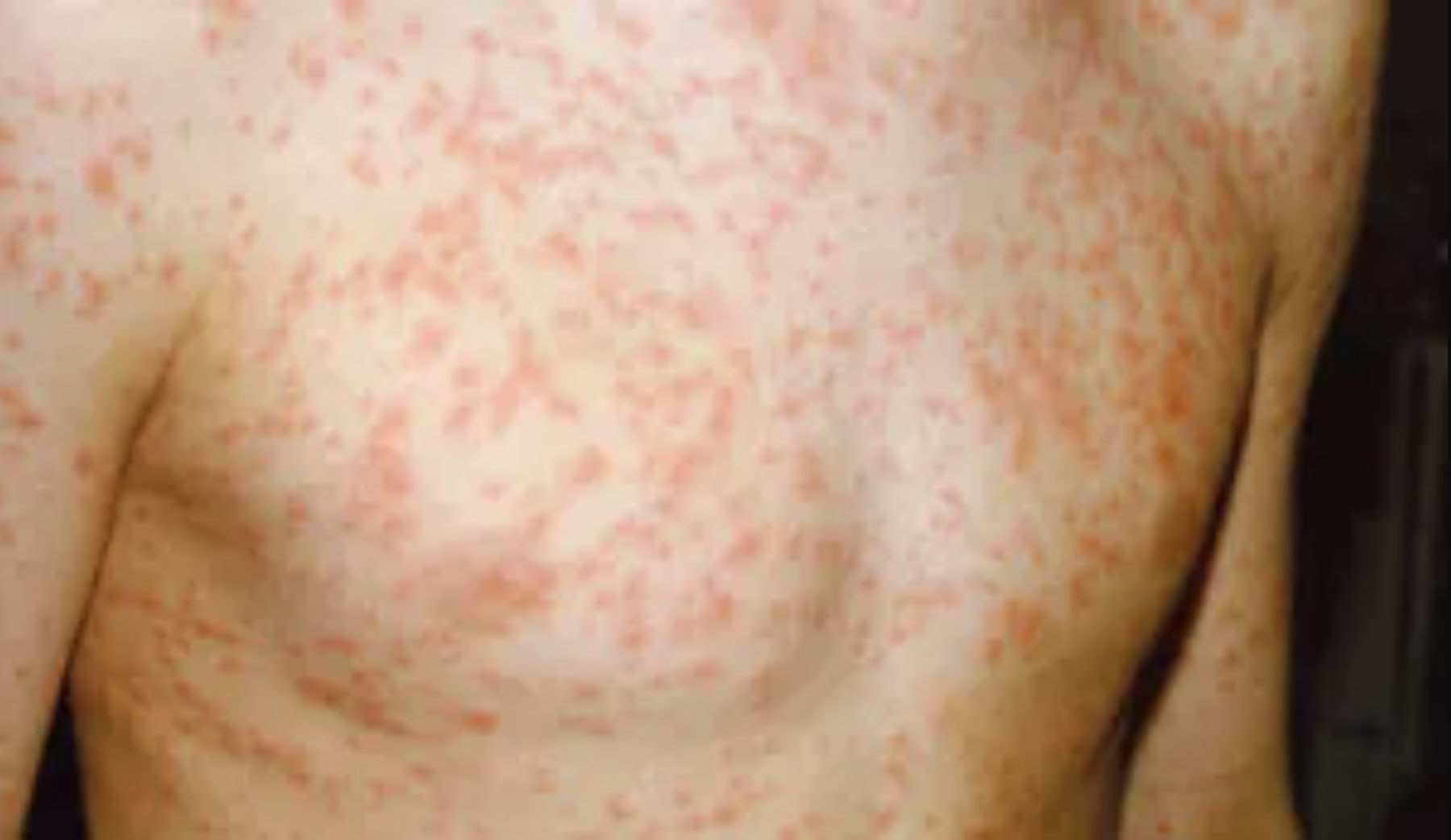Rubella in children is a viral illness and can be prevented with the MMR vaccine. Children usually have good outcomes when they contract Rubella; however, if a fetus develops Congenital Rubella Syndrome, the effects are devastating. Dr. Bornstein will discuss practical insights into understanding the signs, symptoms, treatment, and prevention of Rubella.

RUBELLA DEFINITION:
Rubella is a viral illness with specific symptoms. Rubella is also known as German Measles or 3-Day Measles.
SYMPTOMS OF RUBELLA:
- Congestion
- Runny nose
Followed by: - Swelling of the glands behind the ear and on the back of the neck
- Sometimes, small red spots, called Forcheimer Spots, appear inside the mouth
Following this: - Rash develops on the face and then progresses to the whole body
- The rash usually lasts 3 days
- The rash usually lasts 3 days
CAUSES:
Rubella is caused by a virus.
CONTAGION:
Rubella is contagious through the course of the illness. The incubation period for Rubella is 14-21 days.
DIAGNOSIS:
A physician will usually diagnose Rubella made by the symptoms of the child. Physicians can check a blood test to confirm the diagnosis.
OUTCOME:
The outcome for Rubella is usually good.
Rarely, a complication—such as encephalitis, or brain swelling—occurs. For these children, 20% will not survive. Congenital Rubella, or Rubella in a fetus, can be devastating.
TREATMENT AND DISCUSSION:
Rubella rarely occurs now, due to vaccination. The best way to avoid Rubella is through vaccination. The vaccine is given as the Measles, Mumps, and Rubella vaccine (MMR) at 1 years old. A booster dose is given at 4–6 years old, although the second dose can be given any time during childhood, as long as one month has passed since the first vaccine. The MMR vaccine is 95% effective. The vaccine should not be given to pregnant women, nor should women become pregnant for at least three months after receiving the vaccine. A woman who is susceptible during pregnancy should receive the vaccine shortly after the child is born.
Rubella is transmitted by respiratory droplets—like coughing or sneezing. Rubella can also be transmitted to a fetus through the placenta, which causes birth defects. The incubation period for Rubella is 2–3 weeks.
The first symptom of Rubella is congestion and runny nose, followed by swelling of the glands behind the ear and on the back of the neck. Occasionally, small red spots—called Forcheimer Spots—appear inside the mouth. After this, the rash develops. The Rubella rash usually starts on the face and progresses to the body. The rash is maculopapular, meaning it consists of large and small red spots. The rash usually lasts 3 days.
The most important complication occurs when a pregnant woman contracts the illness during her first trimester, as the fetus could develop Congenital Rubella Syndrome. This syndrome includes defects of almost every organ of the body. Children can become blind or deaf and have heart defects, liver problems, neurologic problems, bone anomalies, and developmental delays. There is no specific treatment for Congenital Rubella Syndrome.
ONE DOCTOR’S OPINION ABOUT RUBELLA:
Vaccination is so important to prevent Rubella. If a child is born with Congenital Rubella, it is a life-long problem. Contracting Rubella as a child is generally harmless, but it can have some serious complications. Vaccination is the only way to prevent this illness.
This blog was written by Dr. Michael Bornstein, who has 30 years of experience as a pediatrician.
Disclaimer: The contents of this article, including text and images, are for informational purposes only and do not constitute a medical service. Please note that all images belong to their original owners. Always seek the advice of a physician or other qualified health professional for medical advice, diagnosis, and treatment.


FOLLOW US